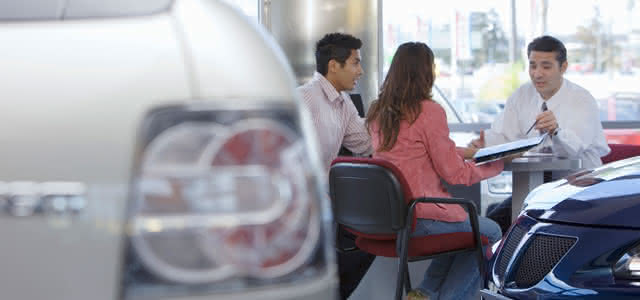Continue to
is responsible for their content and offerings on their site, and their level of security may be different from ours. Please refer to their privacy policy and terms of use for details.
Financing a car doesn’t have to be complicated—and once you understand the basics, you’ll be in a better position to decide on the car financing option that’s right for you.
Financing a car may seem a little overwhelming, particularly for a first-time car buyer. But even though a car is one of the biggest purchases most people will ever make (apart from buying a house), understanding car financing doesn’t have to be a big deal.
Let’s take a look at some car financing basics.
Financing a car adds to the total cost of the car
Once you've decided on a particular car you want to buy, you have 2 payment options: pay for the vehicle in full or finance the car over time with a loan or a lease.
Most car purchases involve financing, but you should be aware that financing increases the total cost of the vehicle. This is because you're paying for the cost of credit (interest and other loan costs) in addition to the cost of the vehicle.
Financing a car with a loan
There are 3 major factors to consider when using a loan to finance a car: the loan amount (this is the total amount you’re borrowing to get the car), the annual percentage rate (also known as the APR, this is the interest rate you pay on your loan) and the loan term (the amount of time you have to pay back the loan amount).
Interest rates are usually higher when you’re financing a used car as opposed to a new one, so shop around for the best rate. You can use the Bank of America auto loan calculator to see how different loan amounts, APRs and terms will affect your monthly payment.
Also, look for a car loan with no prepayment penalty. This will save you money if you decide to pay off your loan early or refinance your car loan.
Financing a car with a lease
Most people think of auto financing as taking out a loan to buy a car, but leasing a car is another popular form of car financing.
When you lease, you only pay for a portion of a vehicle's cost—in other words, you’re paying for using the car, not for the car itself. You may or may not have to make a down payment, sales tax is only charged on your monthly payments (in most states) and you pay a financial rate called a money factor that is similar to the interest rate on a loan. You may also have to pay special lease-related fees and a security deposit.
When you lease a car, you’re typically making a lower monthly payment than if you were to buy the same car, but you’re not gaining any equity in the vehicle that could later translate to trade-in or resale value. You may have an option to buy the vehicle at the end of the lease period, but this will typically cost more than if you had purchased the vehicle to begin with.
You also have to be keenly aware of how many miles you drive (most leases charge a per-mile fee above an annual number of allowable miles) and you need to keep very good care of the car (most leases will charge you for wear, tear and damage at the end of the lease period).





